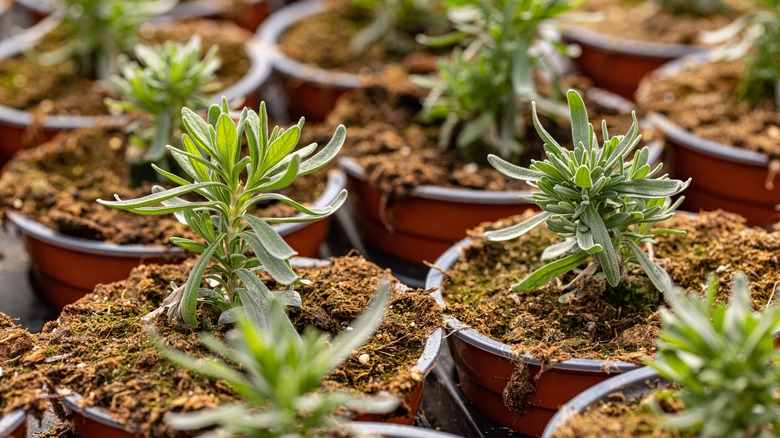Lavender (Lavendula spp.), native to the Mediterranean, is known for its fragrant flowers and versatile therapeutic and culinary uses. The Lavendula genus encompasses a wide variety of species, each with unique characteristics that make lavender a favorite among gardeners and herbalists alike. From deterring pests to attracting pollinators, there are countless benefits of planting lavender in your garden. However, growing lavender from seed can be challenging due to its slow germination rate.
Full-grown lavender plants are small to medium-sized shrubs, characterized by their woody stems and silvery-green, needle-like leaves. The flowers — commonly in shades of purple, lilac, pink, or white — are small and tubular, growing in clusters on a slender spike. Lavender is a perennial, thriving in well-drained, sandy soil and full sunlight, typical of its native Mediterranean environment. Still, to germinate, the seeds need to undergo some time in colder temperatures, a process called cold stratification.
Luckily, simply pre-treating the seeds in a refrigerator can help to encourage your lavender seeds to sprout. Refrigerated in a moist environment with a wet paper towel, this process mimics the natural cold, damp period that the seeds would experience during winter, initiating germination.
How to successfully germinate lavender seeds
@sproutinggreenthumb
Time to start getting seeds ready for the summer garden. Here is a trick for planting lavender. #garden #plantinglavender #sproutinggreenthumb #fyp #gardening #gardentok #gardening101 #gardenproject #zone5b #zone5bgardening #lavender #growlavender #gardenhack #lavenderhack
♬ original sound – Sprouting
To prepare for germination, lavender seeds require a period of cold temperature known as cold stratification as it simulates natural conditions to help seeds break dormancy. Note that not all seeds require cold stratification to initiate germination — species that are native to areas with cold winters are most likely to benefit from this process. Lavender seeds typically require a stratification period of around three to six weeks, so consider starting in mid to late January to align with your planting schedule.
TikTok content creator @sproutinggreenthumb explained how easy the process can be. First, moisten a paper towel, ensuring it is damp but not overly wet. Spread the lavender seeds evenly across the surface of the towel. Fold in half to cover the seeds and place the folded towel inside a sealable plastic bag. Inspect the seeds periodically to check the moisture levels. The correct amount of moisture is important to mimic the environment of winter soil; however, overly wet conditions can cause mold — if you run into this issue, remove any affected seeds and open the bag slightly to provide airflow. If the conditions are too dry, spray with a little more water. Check regularly for signs of germination — once the seeds start to sprout, they are ready to be planted.
Growing lavender from seed

After the stratification period, remove the sprouting seeds from the refrigerator. Ideally, this will be around eight to ten weeks before the last frost, although this can’t always be perfectly timed. For growing lavender, it is best to start seeds indoors to provide a warm, controlled environment for the developing seedlings. Fill small pots or trays with a moist, high-quality seeding mix and incorporate some perlite or coarse sand to improve drainage. Evenly space the seeds on the surface of the seedling mix and cover them with a fine layer of sand, taking care not to completely submerge the seeds.
Keep the substrate moist but not waterlogged and place them in a warm, bright location, ideally between 65 to 70 degrees F. Once the seedlings are large enough to handle, they can be transplanted into larger pots. Note that for lavender seeds, the time from seeding to planting out is around 100 to 200 days and, unfortunately, you may not see flowers on your lavender plants during the first year. However, with a little patience, you will be rewarded with the fragrance of this quintessential, aromatic flower.



